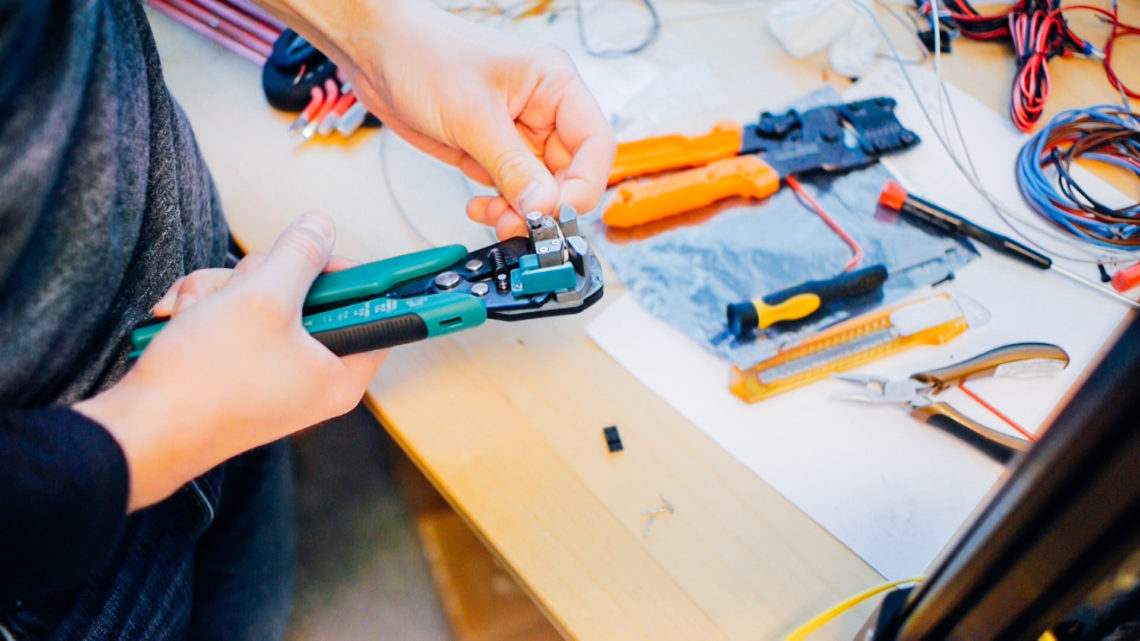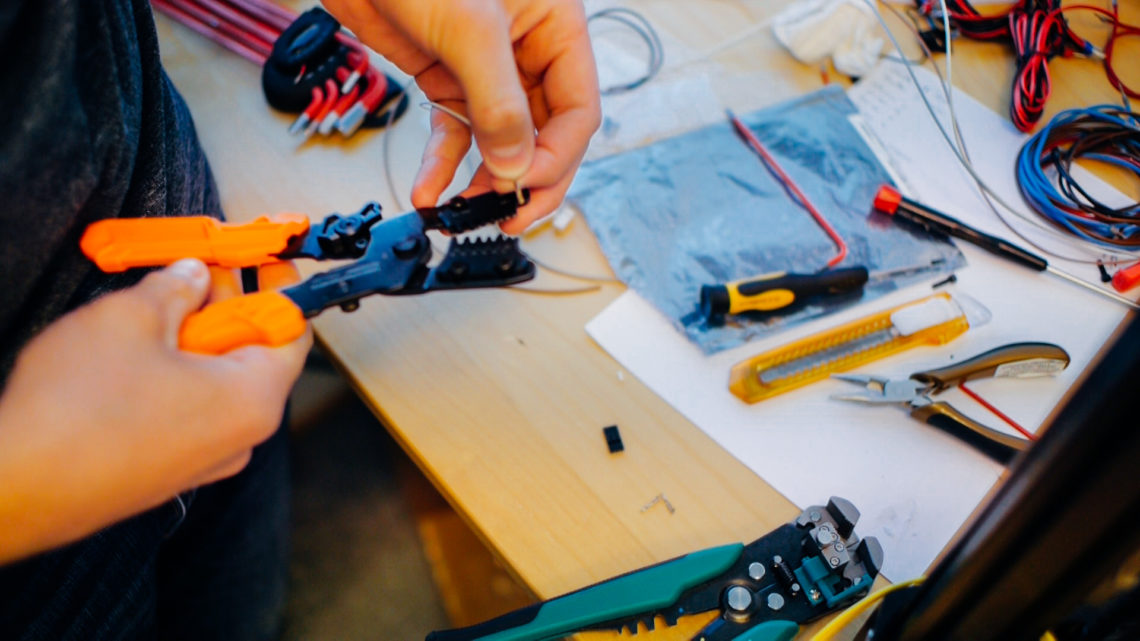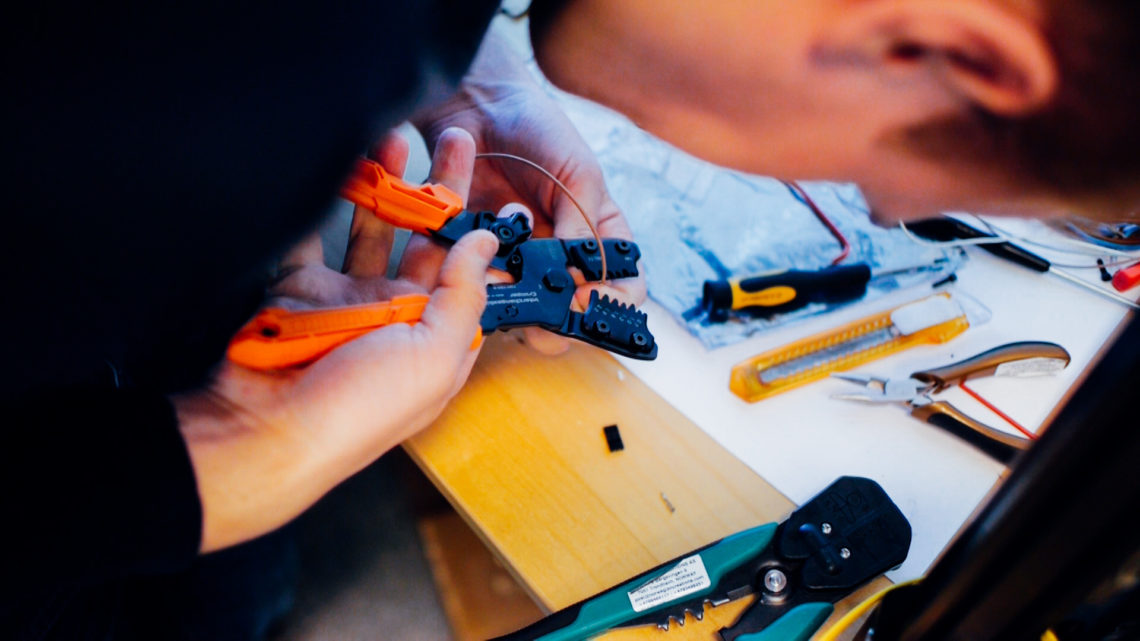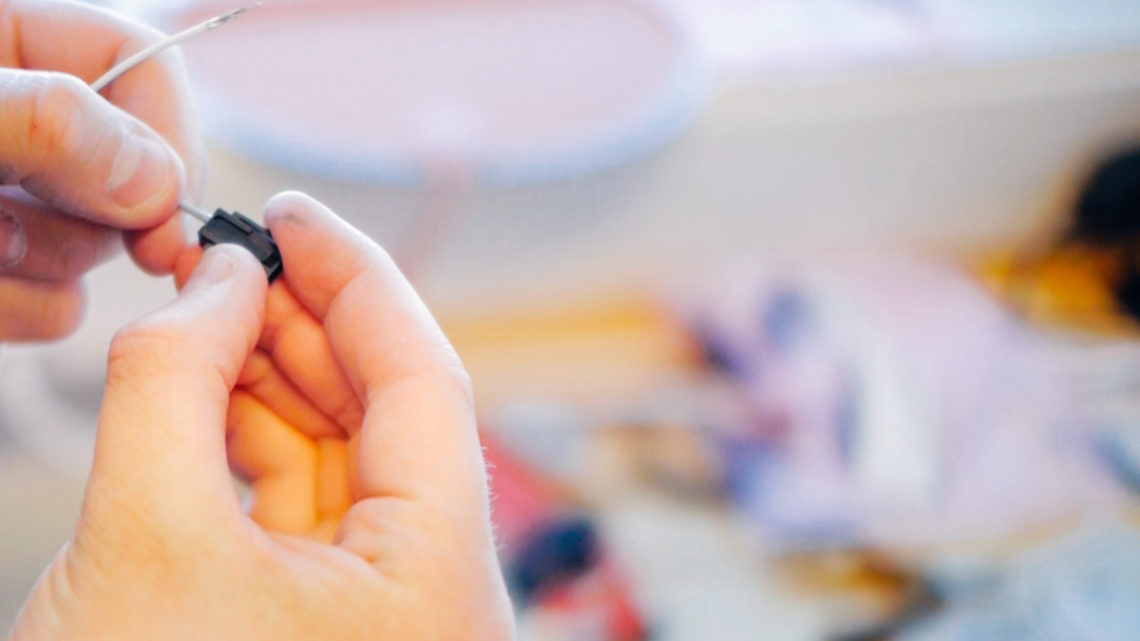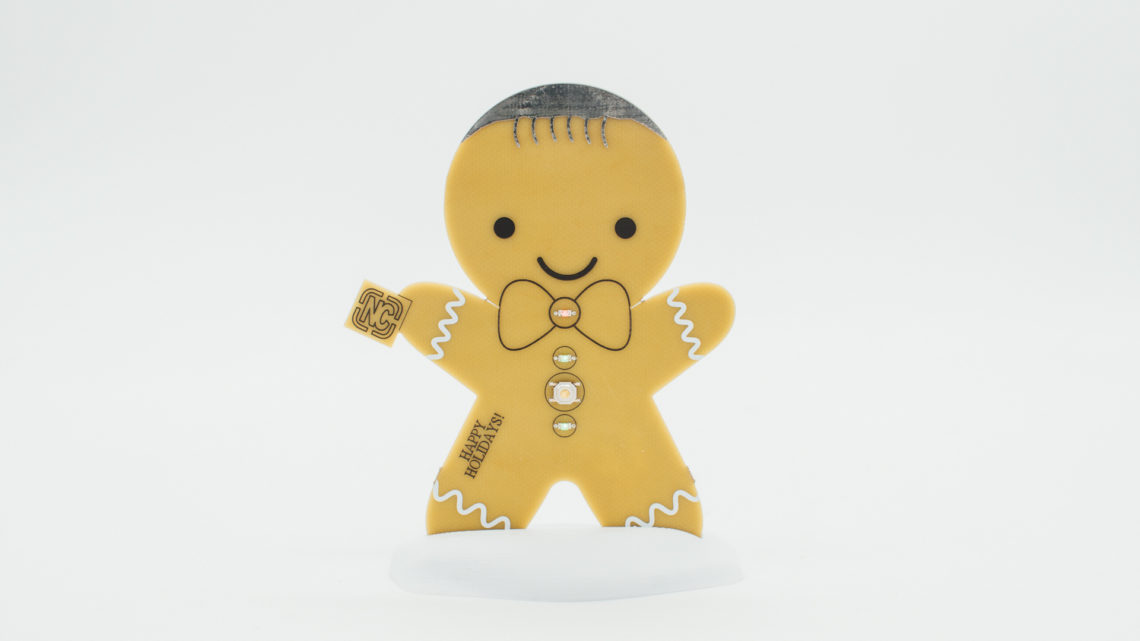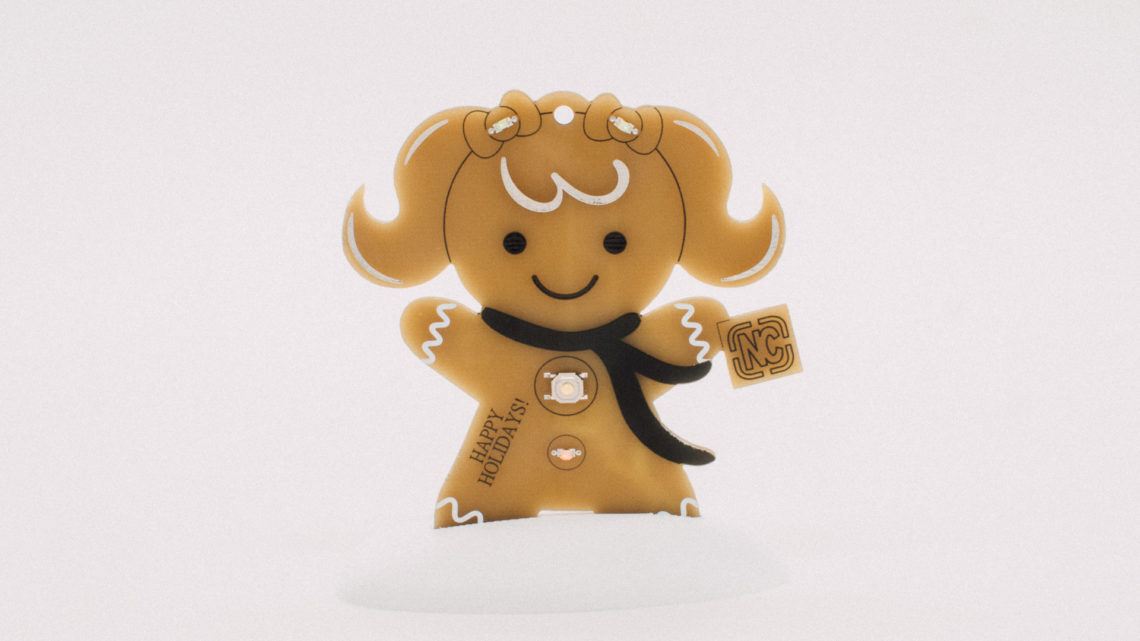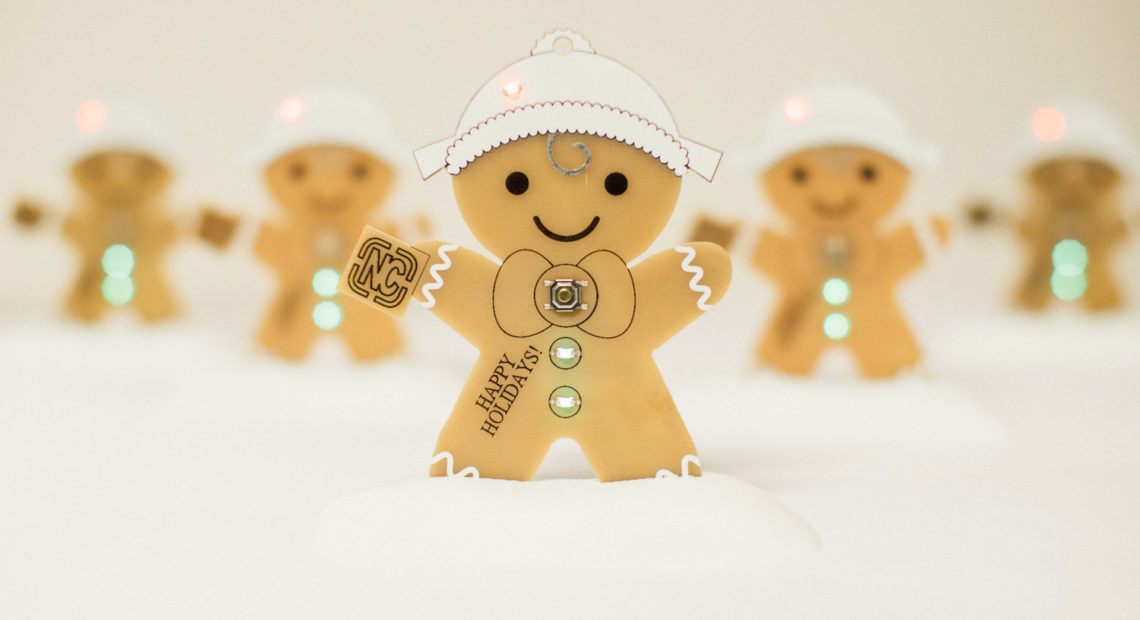It’s been a long wait, but finally all of the parts for our printer have arrived. As shown in this series’ last blog post, we’ve already kickstarted mounting the frame and most of the mechanical parts. The next assembly job to do is wiring all of the electronics together and bringing life to the printer.
Electronics
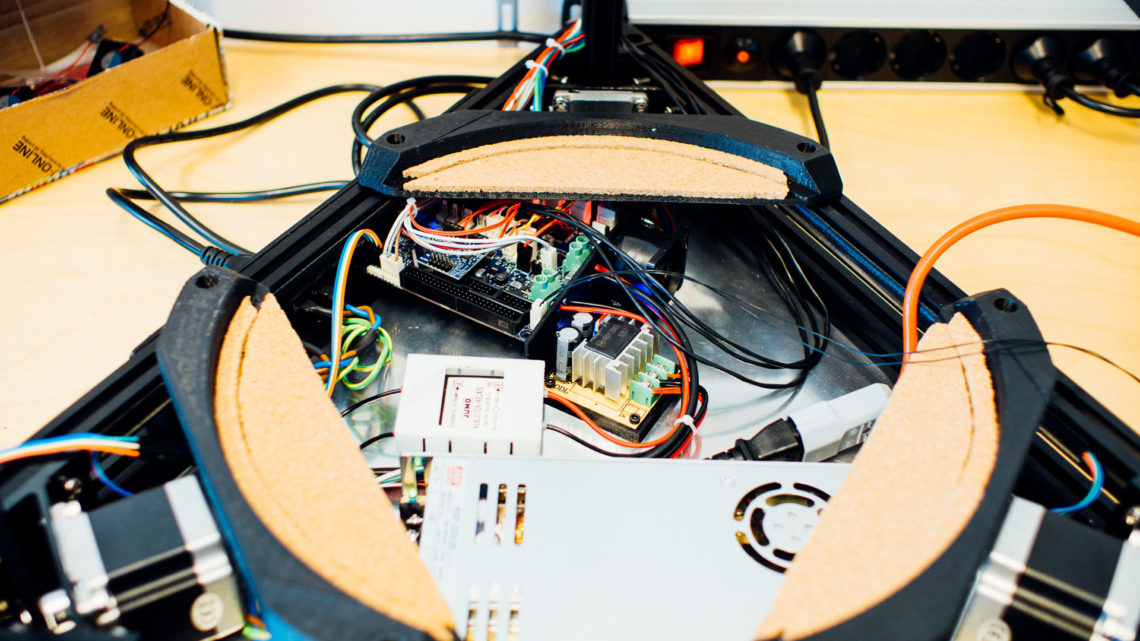
At the heart of the system we have our Duet Wifi controller card. This card have the processing, sensor I/O and stepper drivers all in one board. The extra “electronics” we have on our printer is:
- PSU: Mean Well RSP-320-24 24V DC 13.4A.
- SSR: JUMO TYA 332-45/25,24, we had this in our shelf already, switches 230V AC!
- Buck Regulator: generic 24V to 12V found on eBay a long time ago.
- Z-probe: Mini IR Probe board by DC42/ David Crocker.
- PT100 Daughterboard.
- Axis limit switches: generic micro switches we had in our shelf.
- Touch screen interface: we have a 7 Inch TFT LCD screen bought from eBay together with the PanelDue controller card.
- Misc 12V cooling fans.
In addition to this we are planning to add a filament out sensor so that we can pause the print when filament is out.
We won’t provide any detailed wiring schematics here, mostly because all of the existing documentation is so good. When wiring this printer we have followed the Duet Wifi Wiki. This wiki is really well written and everything is documented, from wiring to tuning of your printer. If you are building your own printer, you should get familiar with this wiki.
However, we want to show certain nice things about or electronics setup:
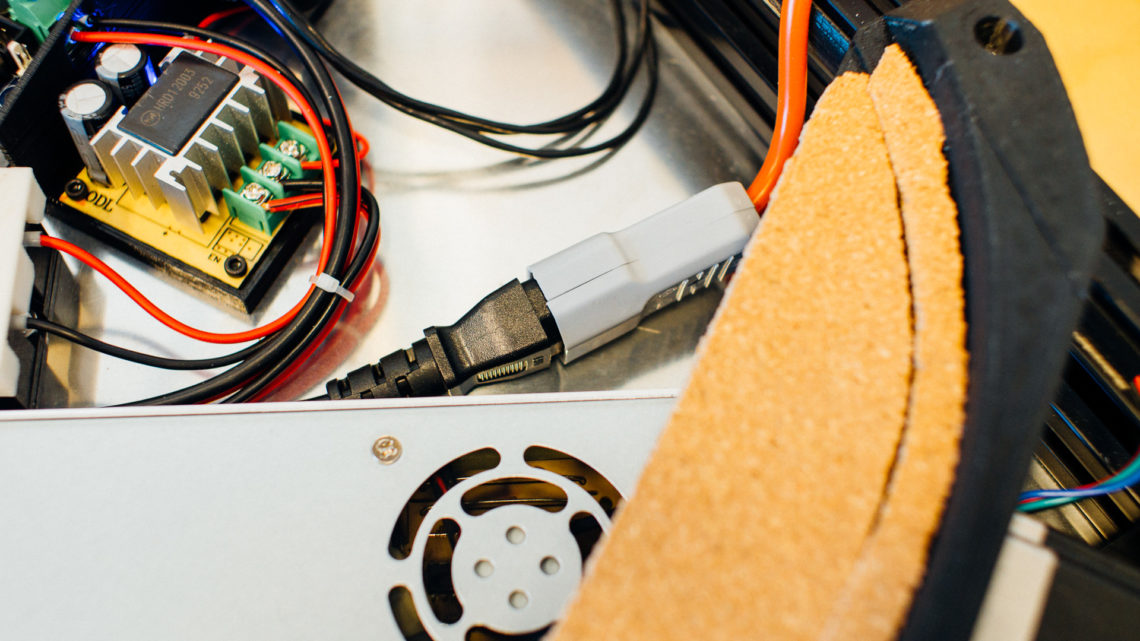
Our bed is powered by mains 230V AC voltage. We want to be able to easily remove the bed, and therefore we needed a connector. We selected to use the regular “euro style” plug (IEC 60320 C13/C14). The benefit is that we get one single 230V rated connector with earth grounding included. The latter is really important, our bed are mounted on a aluminum plate, and to prevent the users getting electrocuted this must be earth grounded!
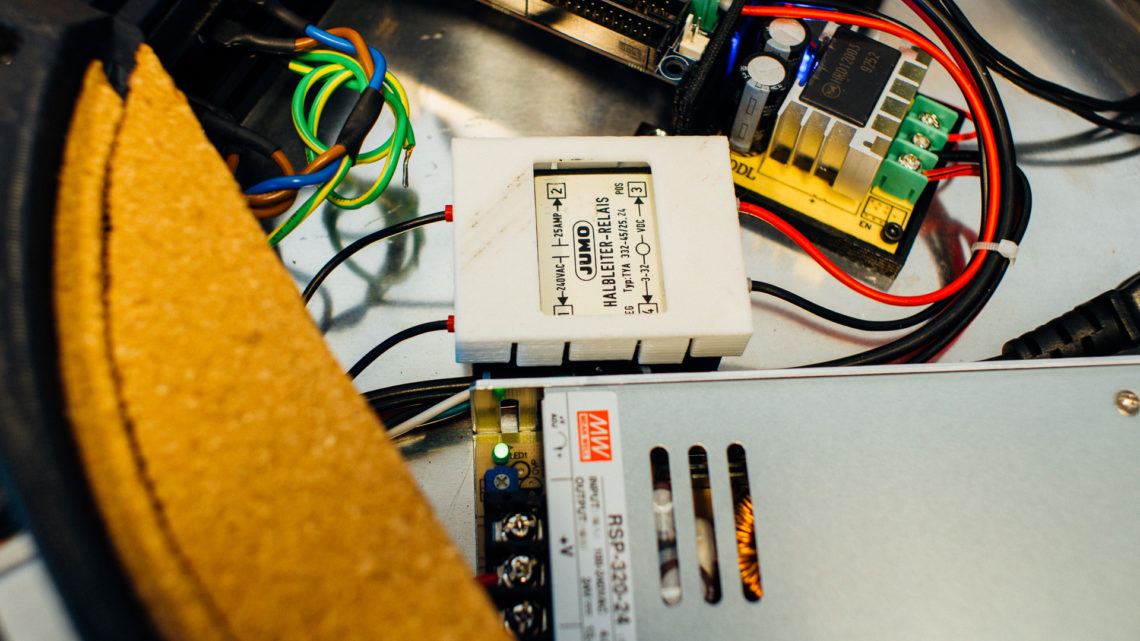
We also added a 3d printed plastic cover over the SSR terminals to minimize the risk of getting electrocuted when doing service on the machine.
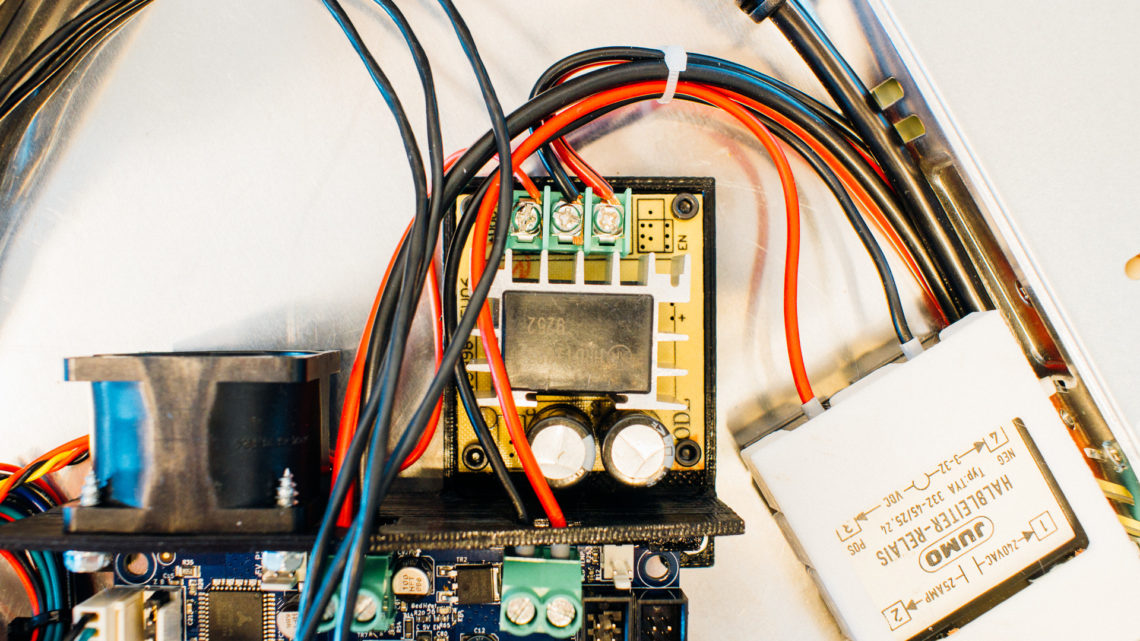
Since our system is 24V-based we need to use 24V fans by default. But since small 24V fans is hard to get, we wanted to still use regular 12V fans. Therefore, we added an extra buck regulator to regulate 24V -> 12V. This 12V is fed into the duet by using the center pin of the “V_FAN JUMPER SELECT” header. This header could be found in this image. This is also documented in this forum post by DC42 :). With this setup we can use 12V fans combined with 24V for the stepper motors and extruder heater.
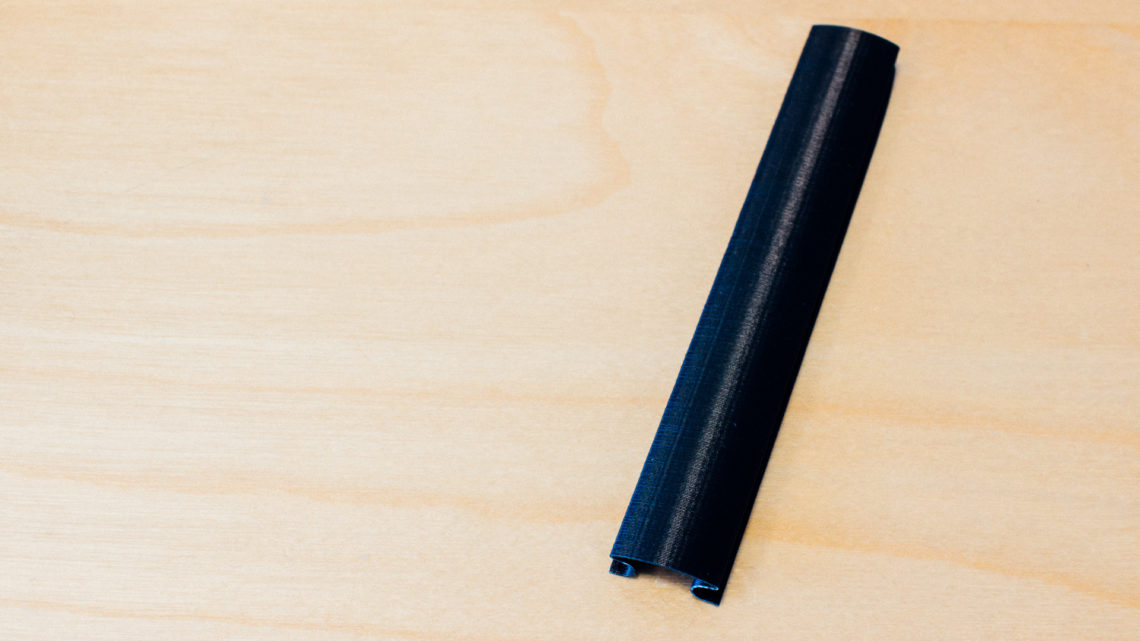
To keep everything tidy we have printed a lot of wiring covers. We started with this thing from Thingiverse. We printed it and it didn’t fit well (hard to assemble and it did easily burst). Therefore, we modified it a bit. Our custom version can be download here. Be sure to slice in vase mode. If they’re difficult to insert into the aluminium extrusions remove more of the back “wings”. We printed ours with 0.4 nozzle. The result is very pleasing:
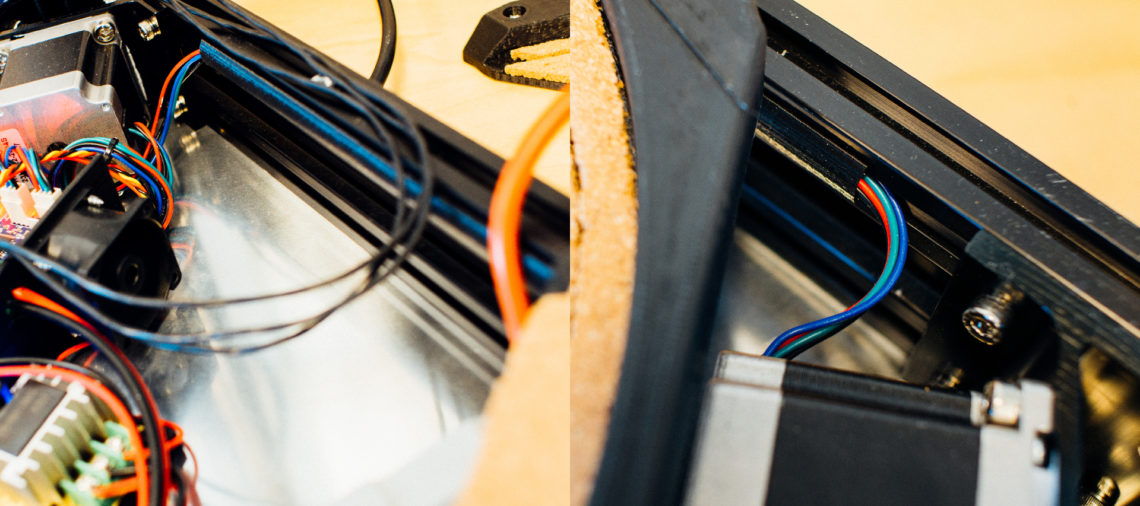
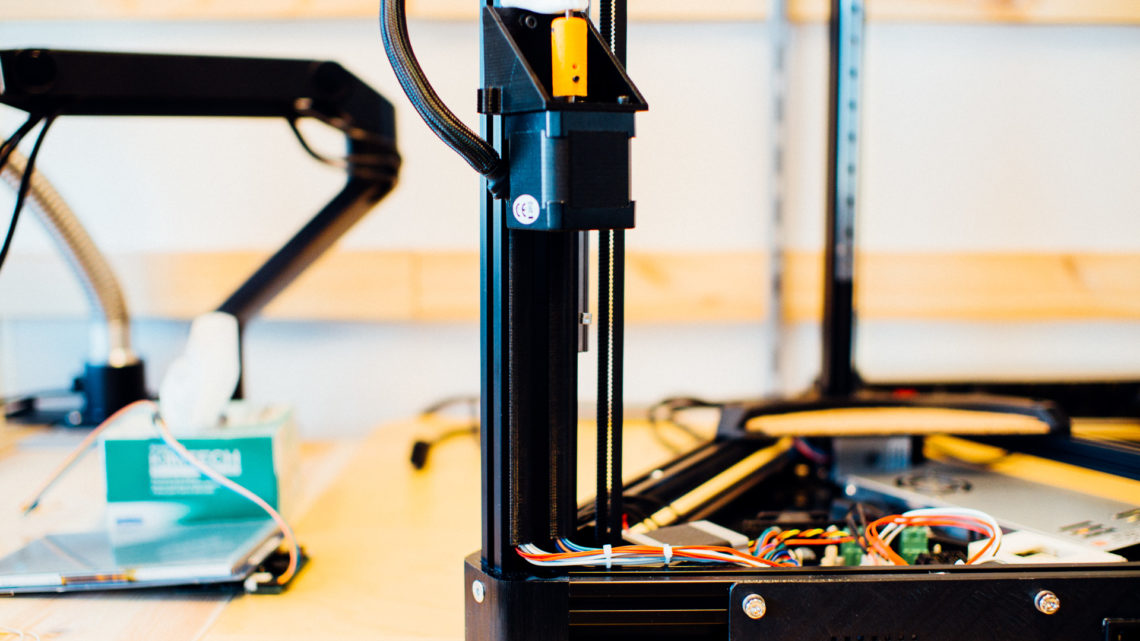
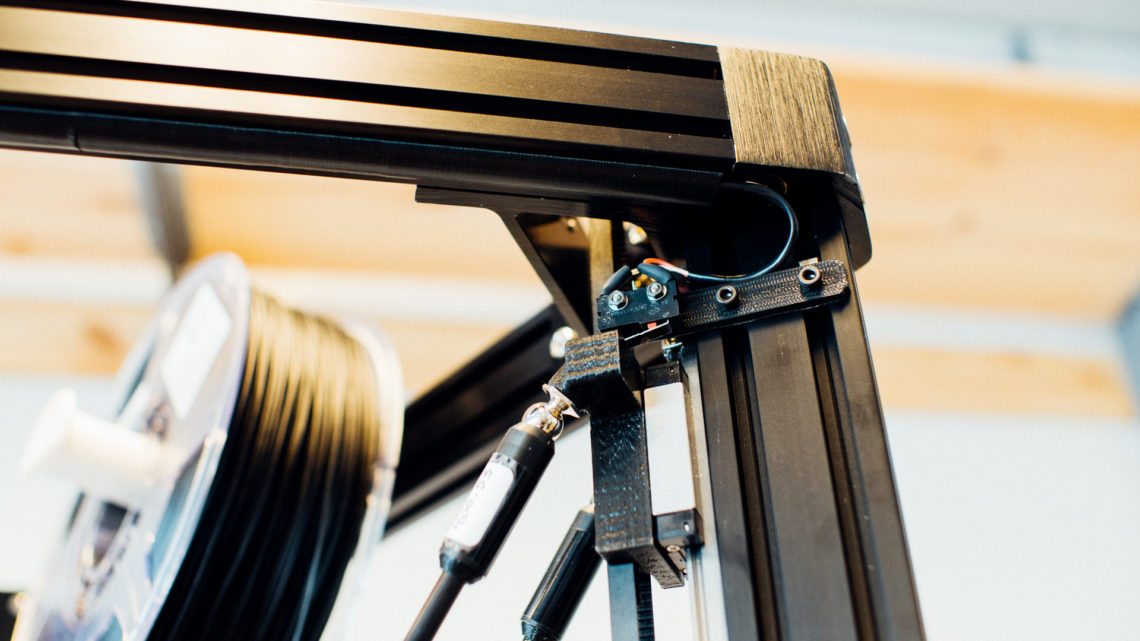
In addition to the wiring covers we have crimped all of the connectors so that we get the correct length, and good serviceability on the various parts of the printer!
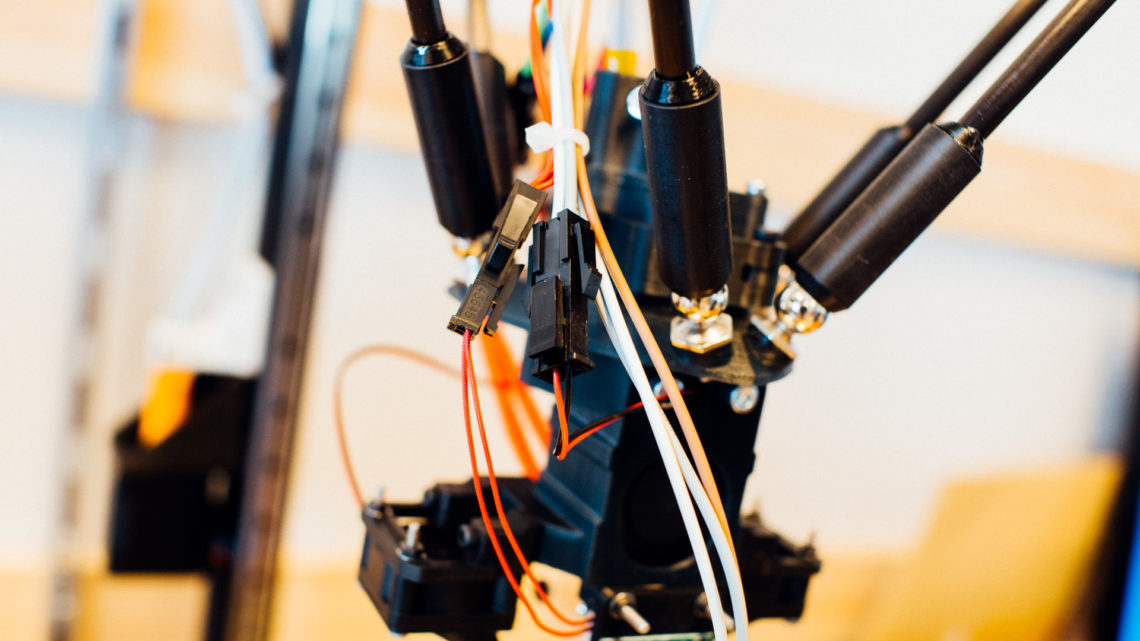
Summary
When building your own 3D printer there’s a lot to take into consideration, and the electronics is no exception. Luckily, the Duet WiFi handles most of the intricacies with its excellent firmware and interface. In this build we’ve really tried to emphasize maintainability. Having already done some modifications on the effector, we’re relieved do have gone with custom connectors.
Electronics also often need brackets of some sorts, and being able to customize and 3D print our own parts has made our job a lot easier.
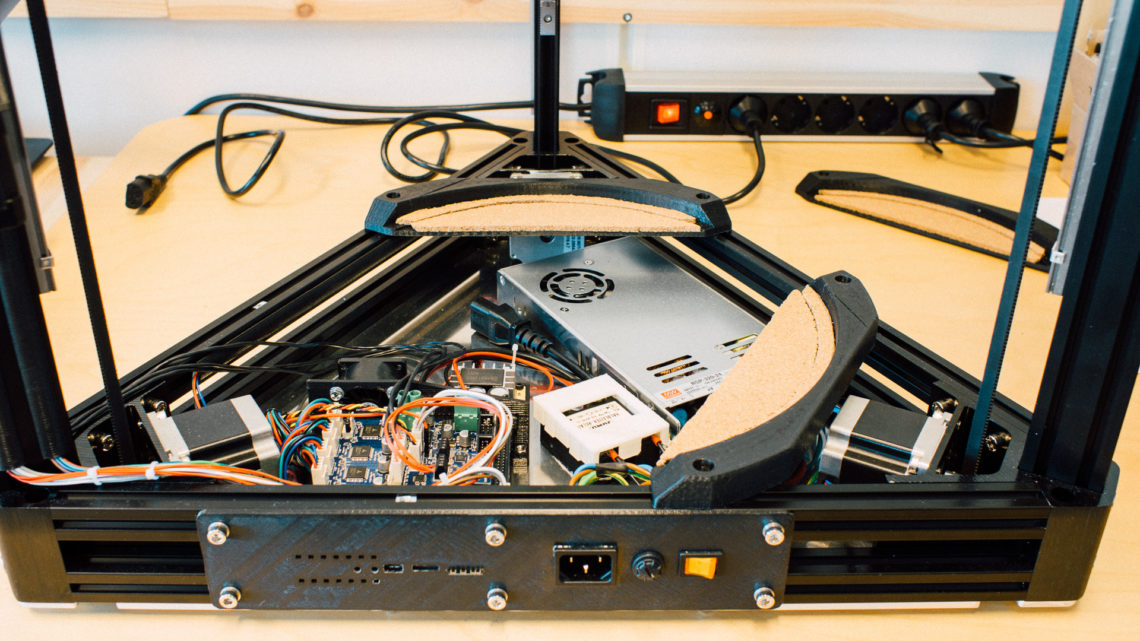
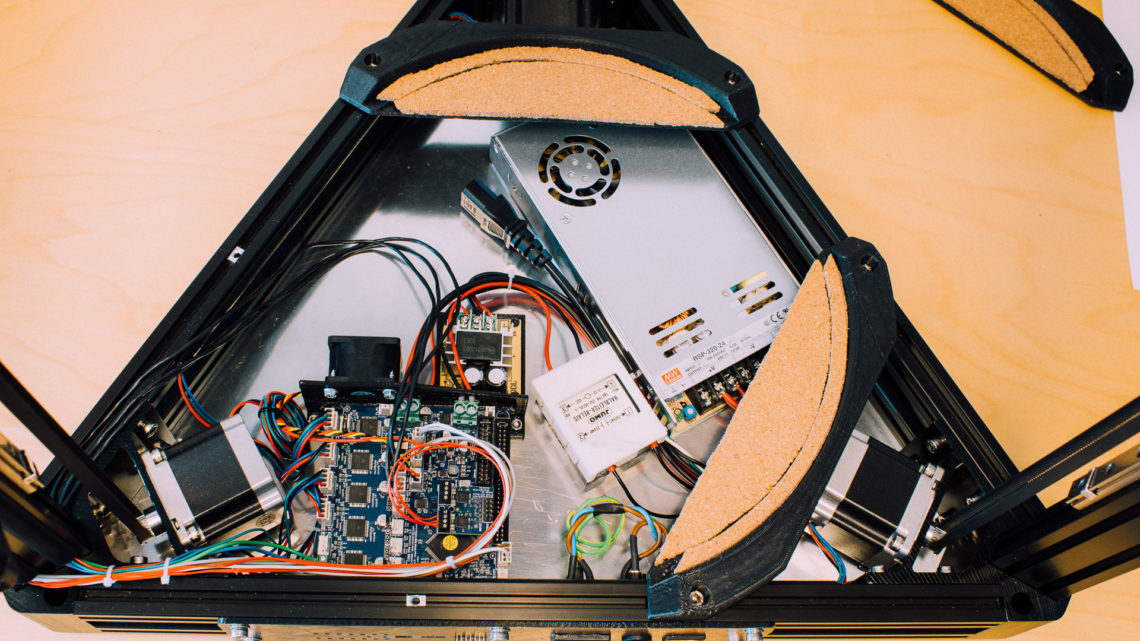
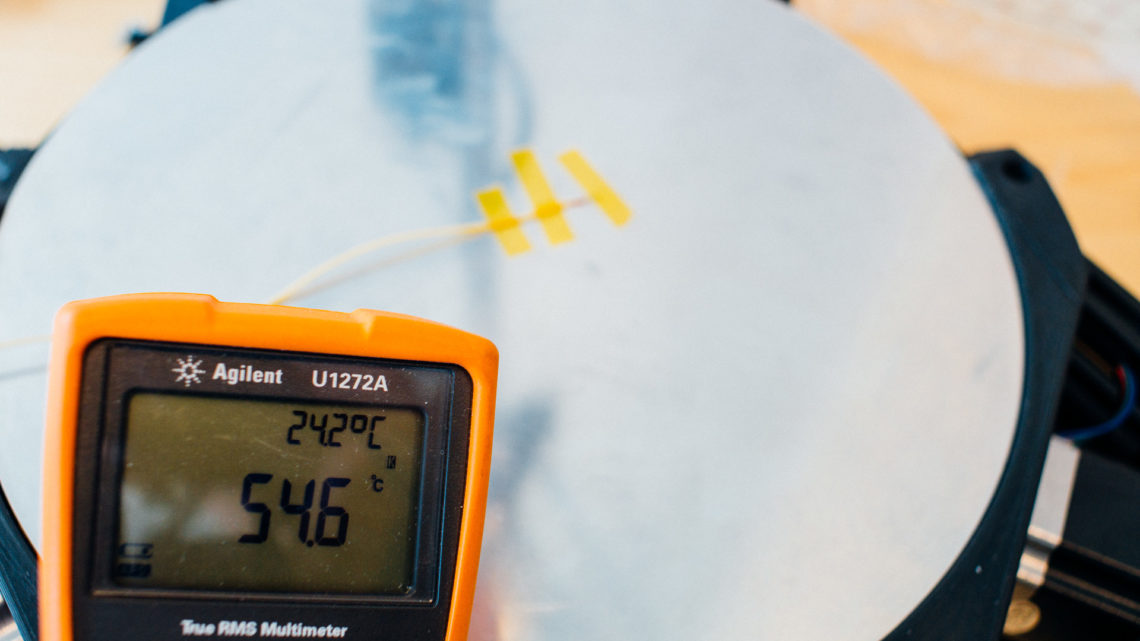
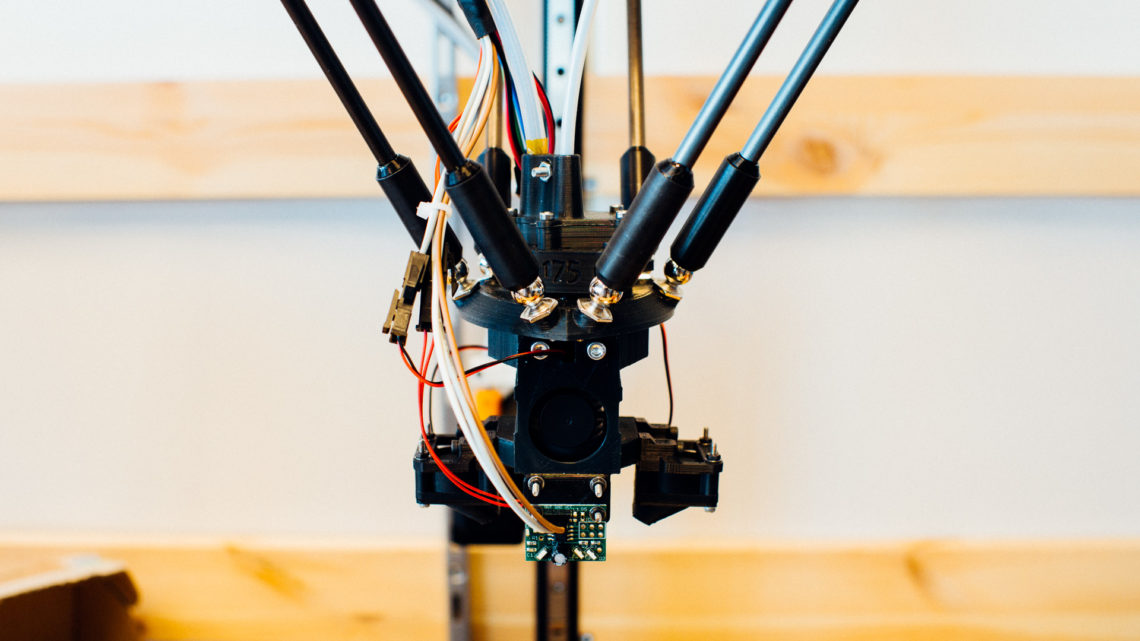
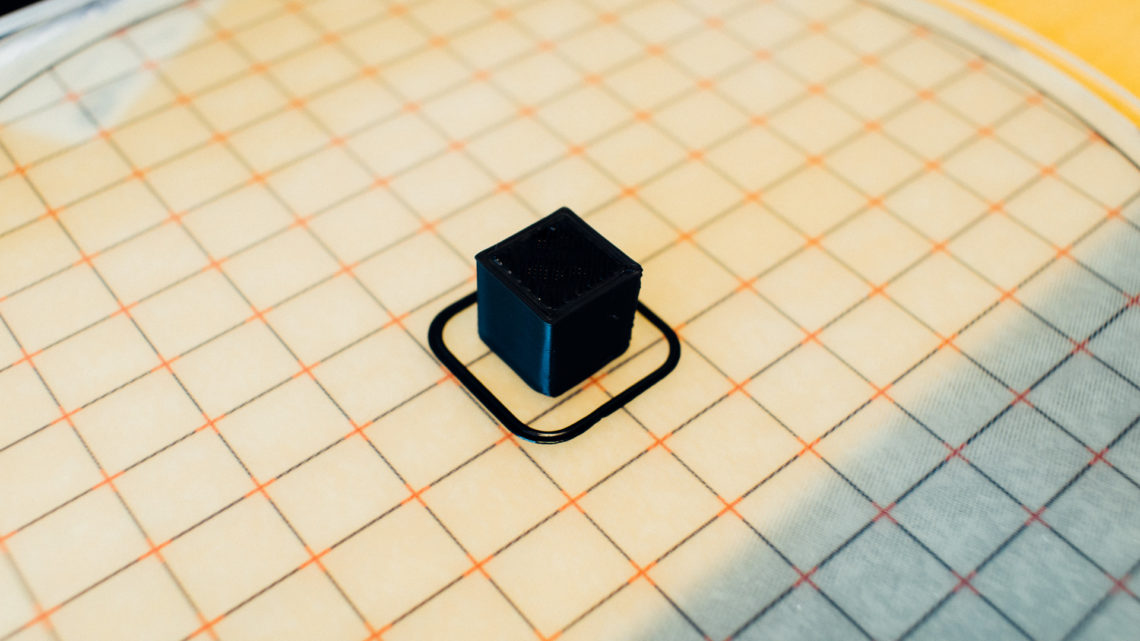
Continue reading about this build in part 4 where we talk about modifications we’ve done to the effector and extruder motor bracket.

